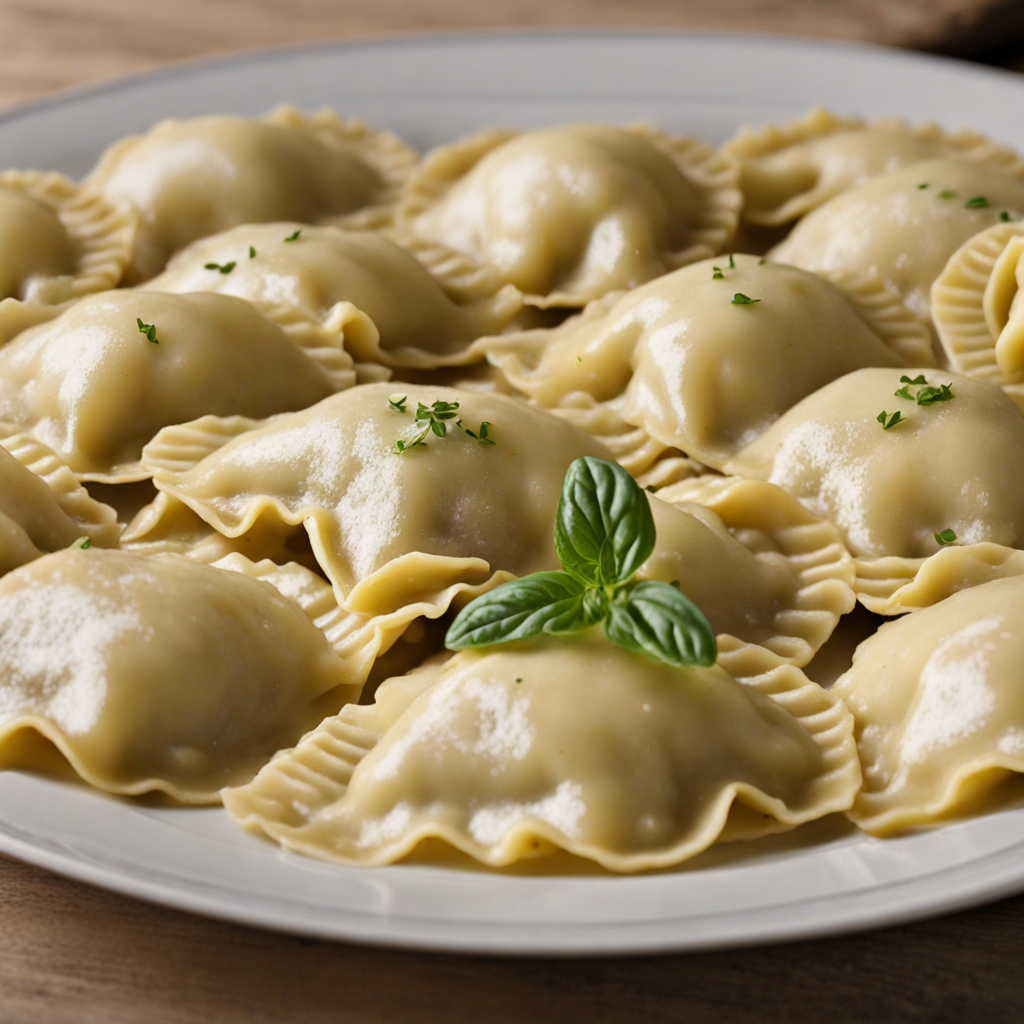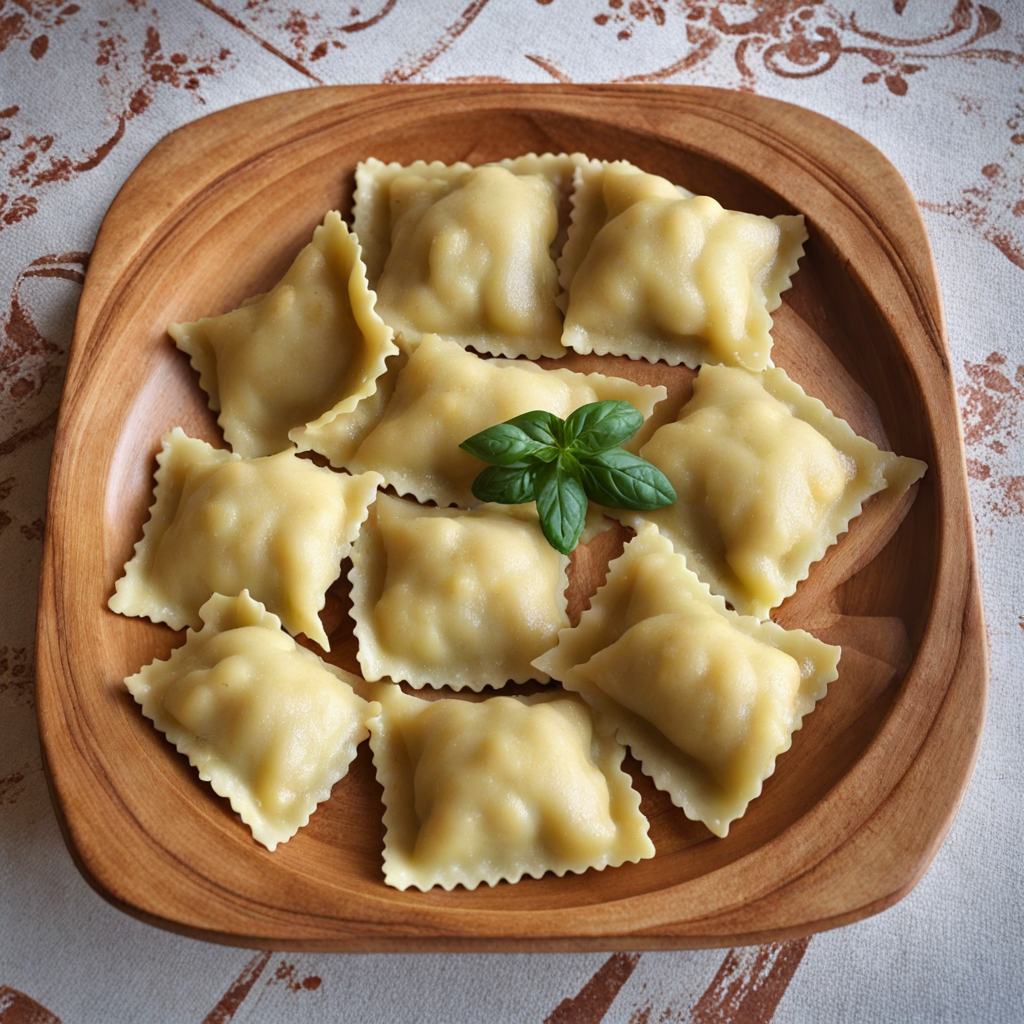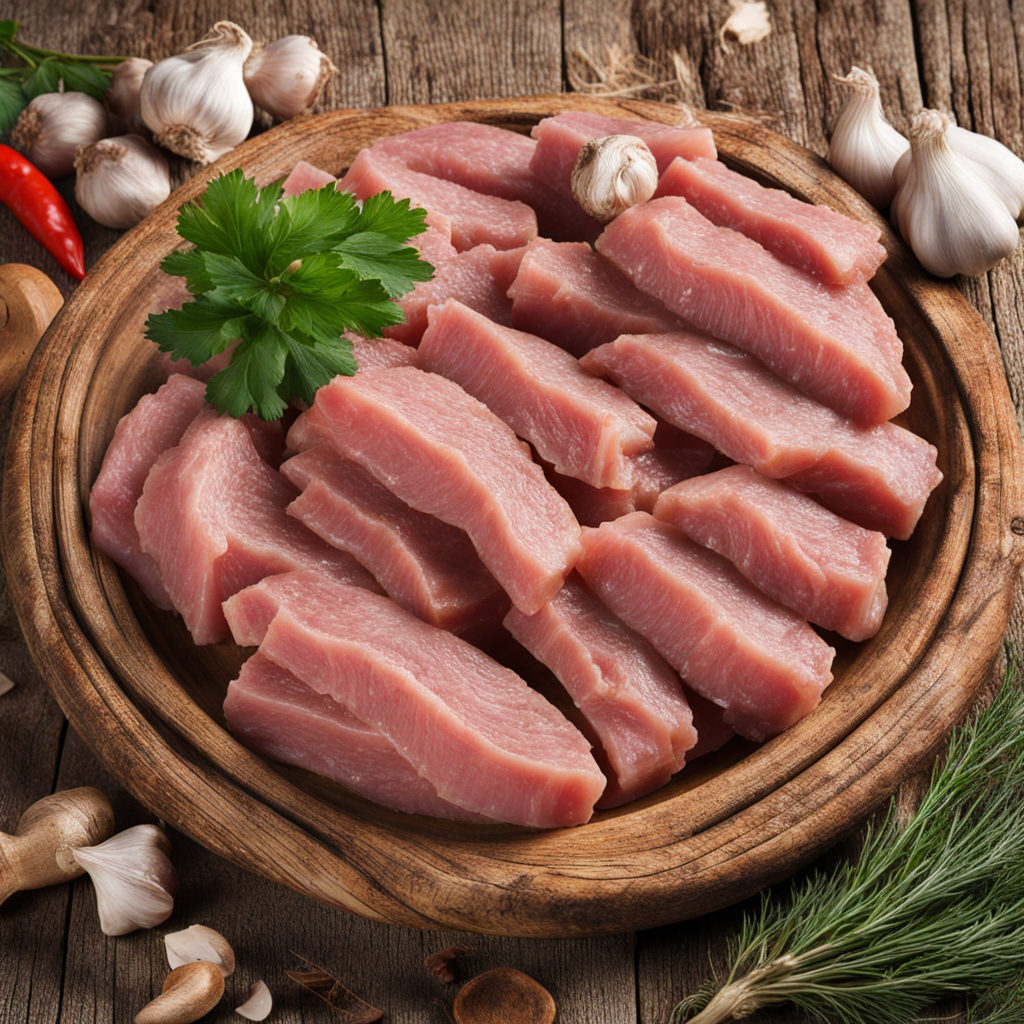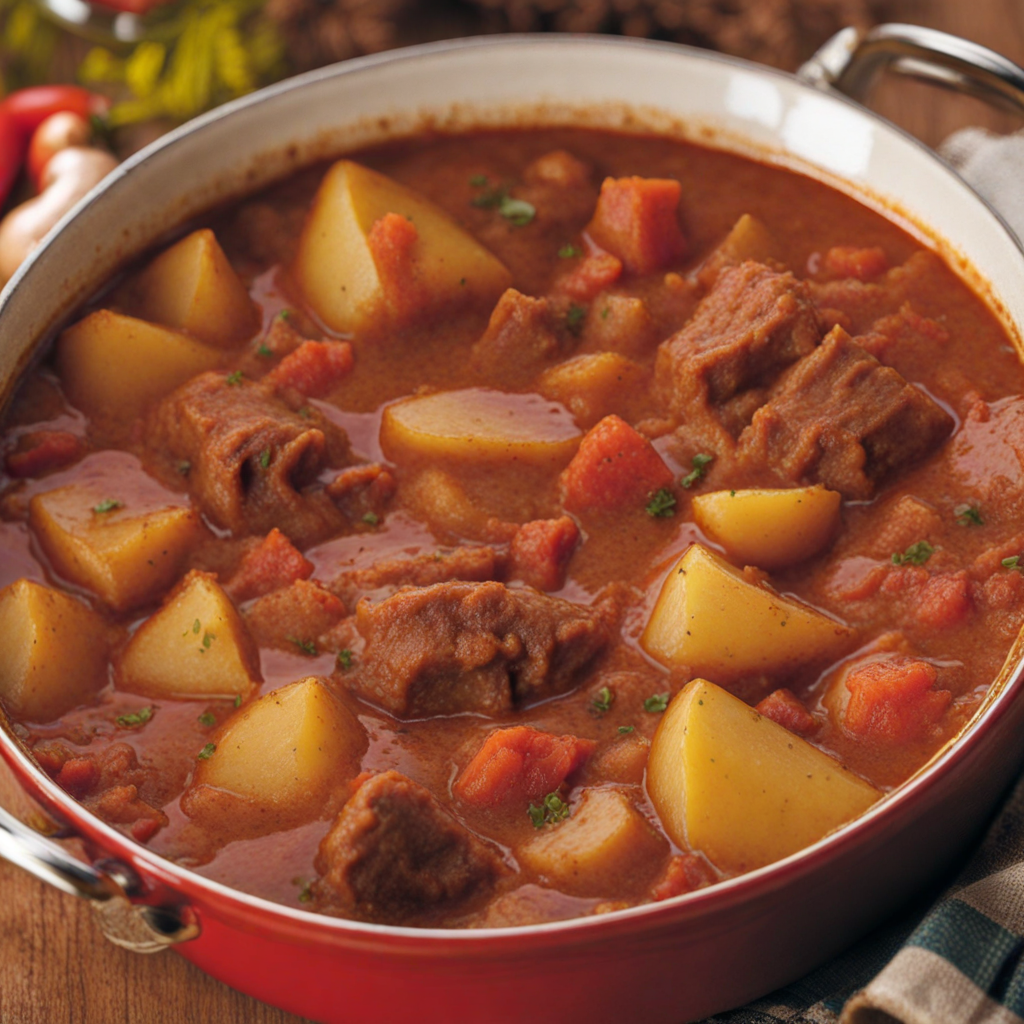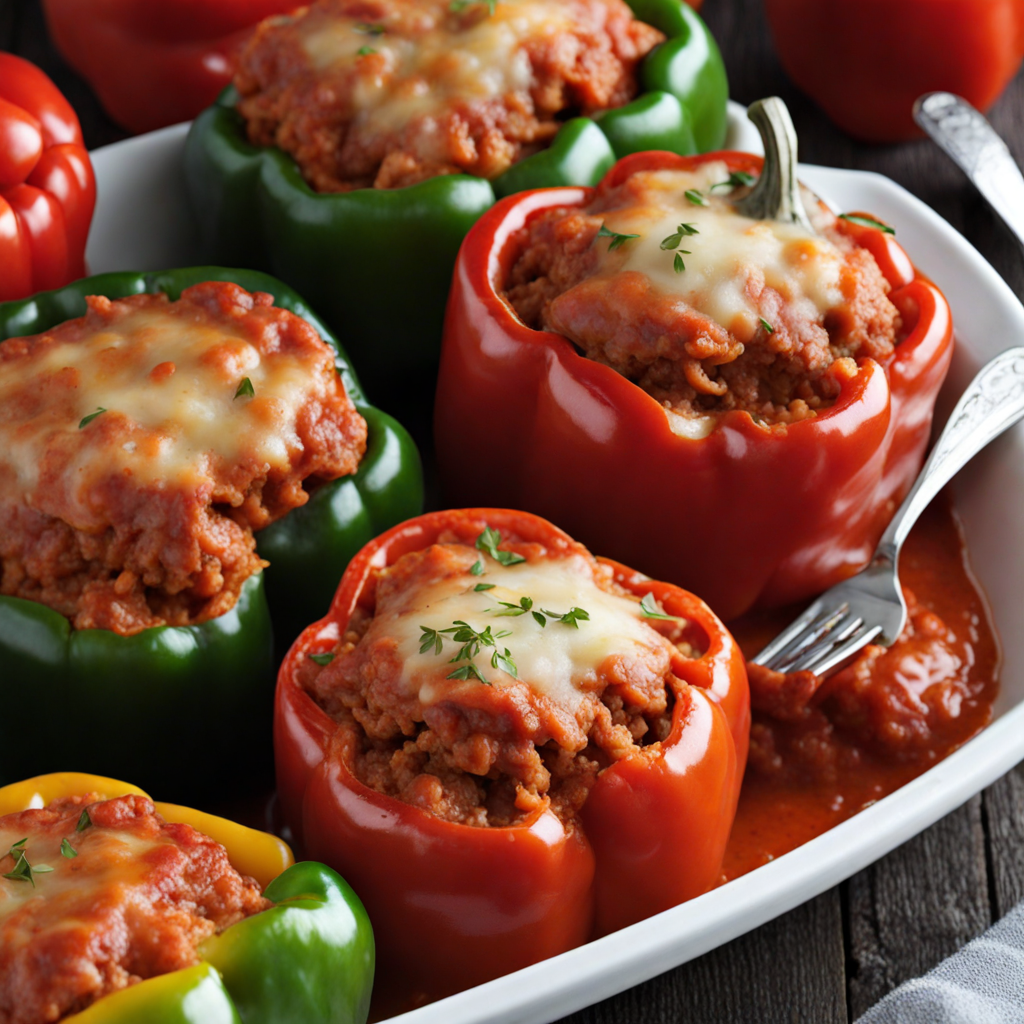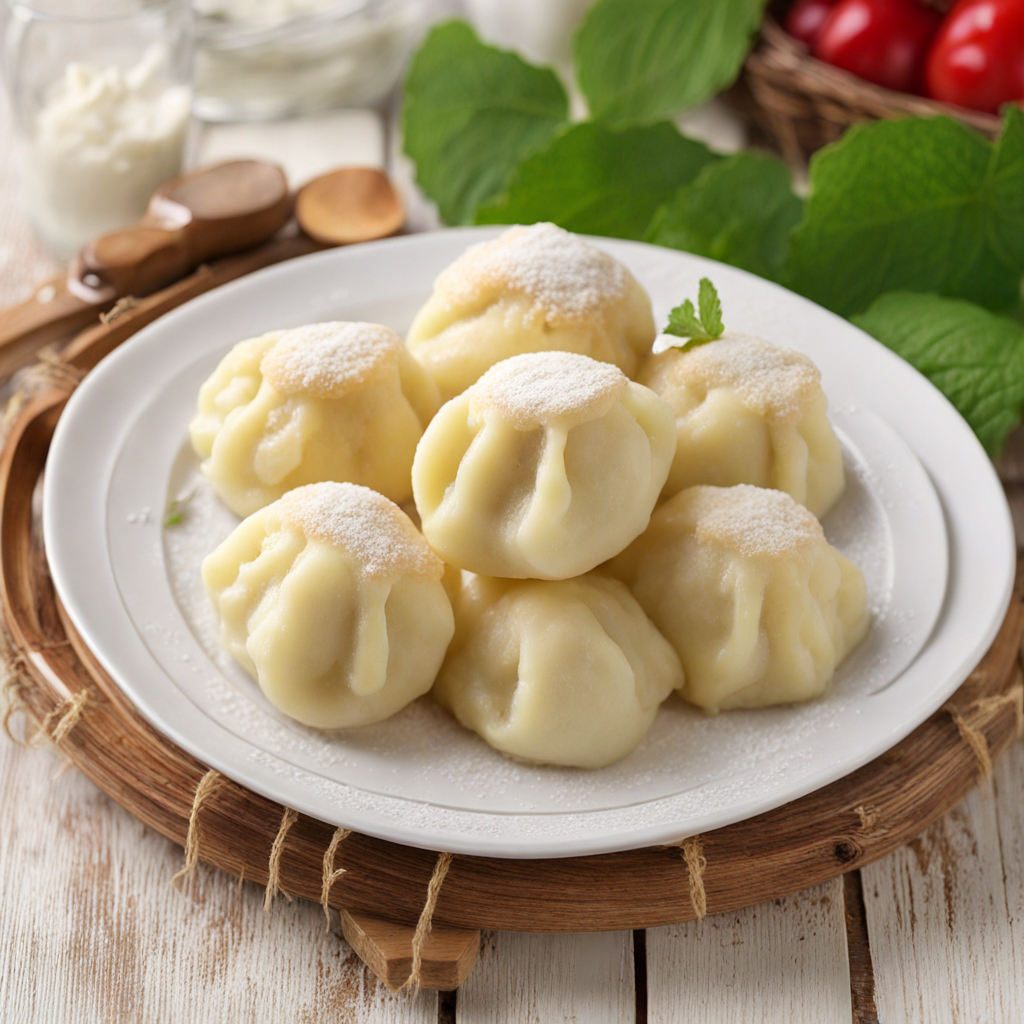Slovenian Ravioli
Slovenian Ravioli, known as 'štruklji' or 'ravioli', is a delightful culinary creation that showcases the rich flavors and traditions of Slovenian cuisine. These dumplings are typically filled with a variety of ingredients, ranging from savory to sweet, making them a versatile dish suitable for any meal. The most common fillings include cottage cheese, potatoes, and various herbs, often seasoned with a hint of nutmeg, which adds a warm and inviting flavor. The dough is made from simple ingredients like flour and eggs, rolled out thinly to encase the flavorful fillings, and then cut into squares or circles for easy folding. Once prepared, Slovenian Ravioli can be cooked in several ways, including boiling, baking, or even frying, depending on the desired texture and flavor profile. Boiling is the most traditional method, allowing the dumplings to retain their delicate structure while absorbing the flavors of the broth or sauce they are served with. Often, they are accompanied by a drizzle of melted butter, a sprinkle of fresh herbs, or a dollop of sour cream, enhancing the overall taste experience. The combination of the tender dough and rich filling creates a satisfying bite that is both comforting and rustic. In addition to the traditional savory versions, Slovenian Ravioli can also be found with sweet fillings like fruits or nuts, often served as a dessert. These variations showcase the adaptability of the dish and highlight Slovenia's diverse agricultural produce. Whether enjoyed as a hearty main course or a delightful sweet treat, Slovenian Ravioli offers a unique taste experience that reflects the heart and soul of Slovenian cuisine, inviting food lovers to explore a new world of flavors.
How It Became This Dish
The History of Slovenski Ravioli: A Culinary Journey Through Slovenia Slovenia, a small yet diverse country nestled in Central Europe, is known for its rich cultural tapestry and culinary heritage. Among the many gastronomic delights that emerge from this enchanting land, Slovenski ravioli holds a special place. These delightful dumplings, filled with a variety of ingredients, reflect Slovenia's historical influences, regional variations, and the evolution of its culinary traditions. #### Origins: A Culinary Crossroads The roots of Slovenski ravioli can be traced back to the broader tradition of stuffed pasta that spans across many cultures, from Italy to Eastern Europe. The concept of encasing a mixture of ingredients within a dough can be found in various forms around the world, but Slovenia's interpretation is uniquely its own. The culinary history of Slovenia has been shaped by its geographical position, bordered by Italy, Austria, Hungary, and Croatia. This prime location has made it a crossroads of cultures, where influences from neighboring countries have melded over centuries. Historically, the earliest forms of stuffed pasta in Slovenia may have emerged during the Middle Ages, a time when trade and communication began to flourish across Europe. As spices, grains, and culinary techniques were exchanged, so too were recipes. The influence of Italian cuisine is particularly notable, as pasta-making techniques were introduced alongside the influx of Italian merchants and settlers in the region. While Italian ravioli became synonymous with the country’s gastronomic identity, Slovenski ravioli has carved out its own niche, characterized by local ingredients and flavors. #### Ingredients and Variations Slovenski ravioli are typically made from a simple dough composed of flour, eggs, and water. The filling varies widely, reflecting the seasonal availability of ingredients and regional preferences. Common fillings include potatoes, cheese, mushrooms, and various meats, such as pork or beef. Each region in Slovenia boasts its own twist on the classic, incorporating local herbs and spices that add distinctive flavors. In the Alpine regions, for instance, the use of wild mushrooms and hearty cheeses is prevalent, while in the lowland areas, you might find fillings made from fresh vegetables or even fruit, showcasing Slovenia's agricultural diversity. One popular variant, "štruklji," is a rolled dumpling that can be filled with sweet or savory fillings and is often served as a side dish. This adaptability is part of what makes Slovenski ravioli so significant. They are not merely a dish; they represent the agricultural bounty of the land, the creativity of local cooks, and the communal aspect of Slovenian dining. The act of making ravioli can often be a family affair, passed down through generations, thus reinforcing familial bonds and cultural heritage. #### Cultural Significance Beyond their deliciousness, Slovenski ravioli hold important cultural significance. Festivals celebrating traditional Slovenian cuisine often feature these dumplings, bringing together communities to celebrate their culinary heritage. Events such as the "Ravioli Festival" highlight the versatility of these dumplings, showcasing various fillings and preparation methods, and encouraging locals and tourists alike to engage with Slovenia’s food culture. In Slovenian households, ravioli are often prepared for special occasions and family gatherings. They symbolize warmth and togetherness, as families come together to create these delectable morsels. The process of rolling out the dough, crafting the perfect filling, and sealing the edges is often accompanied by lively conversation and laughter, making it a cherished family tradition. Furthermore, Slovenski ravioli are sometimes associated with different seasons and celebrations. For instance, during the harvest season, variations with pumpkin or other seasonal vegetables are popular, while winter may see heartier fillings making their way into the mix. This seasonal adaptability not only showcases the connection to the land but also aligns with Slovenia’s emphasis on sustainability and local sourcing. #### Evolution Over Time As Slovenia has transitioned through various historical periods—from the Habsburg Monarchy to Yugoslavia and finally to independence in 1991—the culinary landscape has also evolved. The globalization of food culture has introduced new techniques and ingredients to Slovenski ravioli, allowing for innovation while still honoring traditional methods. In contemporary Slovenia, chefs and home cooks alike are experimenting with Slovenski ravioli, incorporating international influences while maintaining the essence of this traditional dish. Modern twists might include fusion fillings, such as smoked salmon or exotic spices, reflecting the globalized palate of today’s diners. Yet, the foundational elements—handmade dough and local fillings—remain unchanged, ensuring that the spirit of Slovenski ravioli endures. The rise of Slovenia as a gastronomic destination has also led to a renewed interest in traditional foods. Chefs are embracing local cuisine, and Slovenski ravioli have found their way onto the menus of upscale restaurants, where they are presented with artistic flair, paired with local wines, and celebrated for their authenticity. #### Conclusion: A Dish of Heritage and Innovation Slovenski ravioli is more than just a culinary delight; it is a symbol of Slovenia’s rich history, cultural significance, and the ongoing evolution of its food traditions. From its origins at the crossroads of Europe to its place in modern Slovenian cuisine, this dish has adapted and transformed while remaining rooted in the values of community, family, and celebration. As Slovenia continues to embrace its culinary heritage while engaging with the global food scene, Slovenski ravioli stands as a testament to the resilience and creativity of its people. Whether enjoyed at a family gathering, a local festival, or a fine dining establishment, these dumplings invite all to partake in a delicious journey through Slovenia’s past, present, and future.
You may like
Discover local flavors from Slovenia


